Musical Instrument Museum, Part 1
 In Scottsdale, Arizona lies a jewel in the desert in the form of the Musical Instrument Museum. Tony Bennett is quoted on their website saying, "MIM is my favorite museum in the world. Everyone needs to see it."
In Scottsdale, Arizona lies a jewel in the desert in the form of the Musical Instrument Museum. Tony Bennett is quoted on their website saying, "MIM is my favorite museum in the world. Everyone needs to see it."
And who am I to argue with Tony Bennett, so a couple weeks ago, I visited to see for myself whether or not it is really that special. It is.
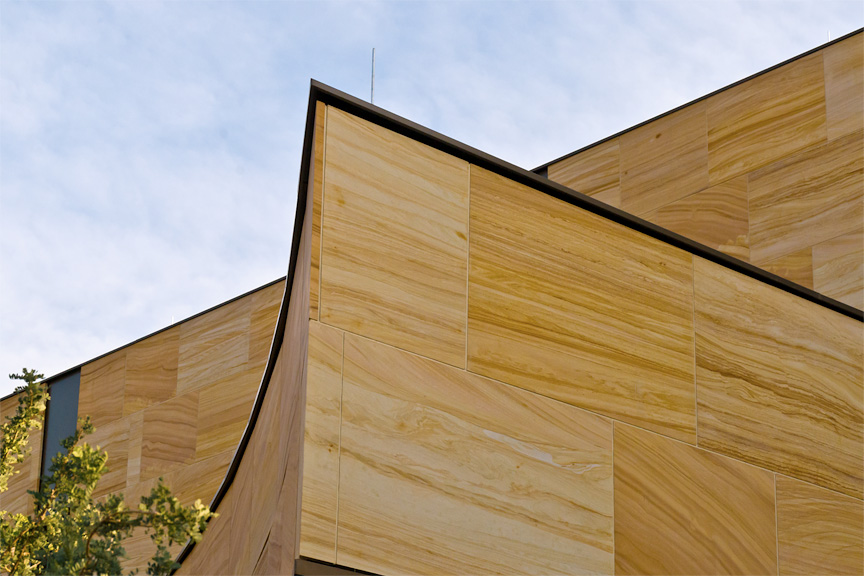 Your visit starts with the striking modern architecture, most of the exterior walls faced in what appears to be sandstone. This spot is just outside The Café at MIM, the obligatory snack bar. I ate lunch elsewhere before my visit — big mistake. The very next day there was a glowing review of this cafe in The Arizona Republic. Now I have to schedule another visit just to sample the cuisine.
Your visit starts with the striking modern architecture, most of the exterior walls faced in what appears to be sandstone. This spot is just outside The Café at MIM, the obligatory snack bar. I ate lunch elsewhere before my visit — big mistake. The very next day there was a glowing review of this cafe in The Arizona Republic. Now I have to schedule another visit just to sample the cuisine.One of the delightful spots on the grounds is the courtyard just outside the main entrance and the cafe. It is a very peaceful location complete with gently running water to calm any agitated nerves.

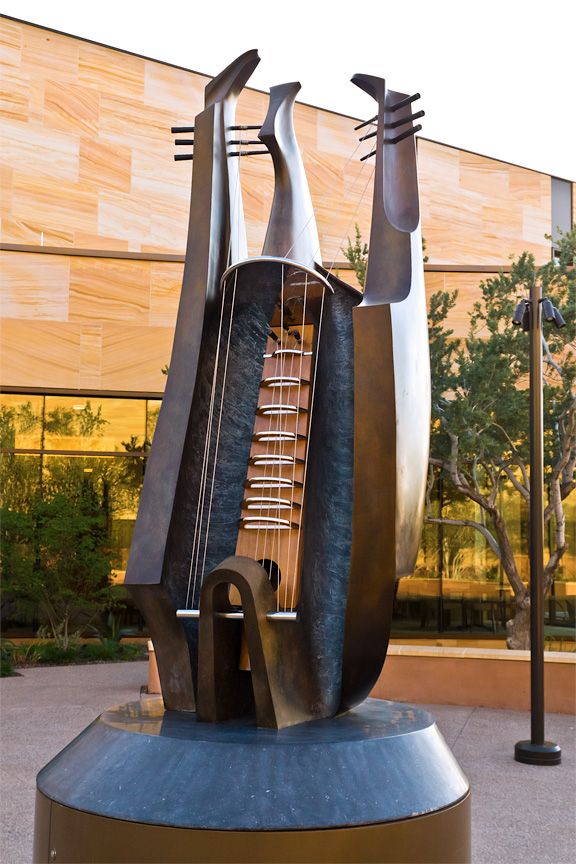 In the center is this very interesting sculpture with obvious ties to the musical instruments contained inside the museum.
In the center is this very interesting sculpture with obvious ties to the musical instruments contained inside the museum.
 Upon entering and paying your admission, the first display is simply a "welcome to our museum" montage — which cannot adequately prepare you for the exhibits you are about to enjoy. The message is that every human culture has formed some type of music either via voice or via musical instruments. The conclusion, they suggest, is that music is embedded in the brain — although the reason for that connection is open to speculation.
Upon entering and paying your admission, the first display is simply a "welcome to our museum" montage — which cannot adequately prepare you for the exhibits you are about to enjoy. The message is that every human culture has formed some type of music either via voice or via musical instruments. The conclusion, they suggest, is that music is embedded in the brain — although the reason for that connection is open to speculation.
Visitors are given a small receiver and headset. Many of the exhibits have audio that you can hear through the headset as you get near. Sometimes it is narrative, sometimes it is the sounds of the instruments on display. That really helps one understand and enjoy the story behind the instruments.
Nothing exemplifies modern American music quite like the guitar — thus the first real exhibit is "Guitars" with many different types on display.
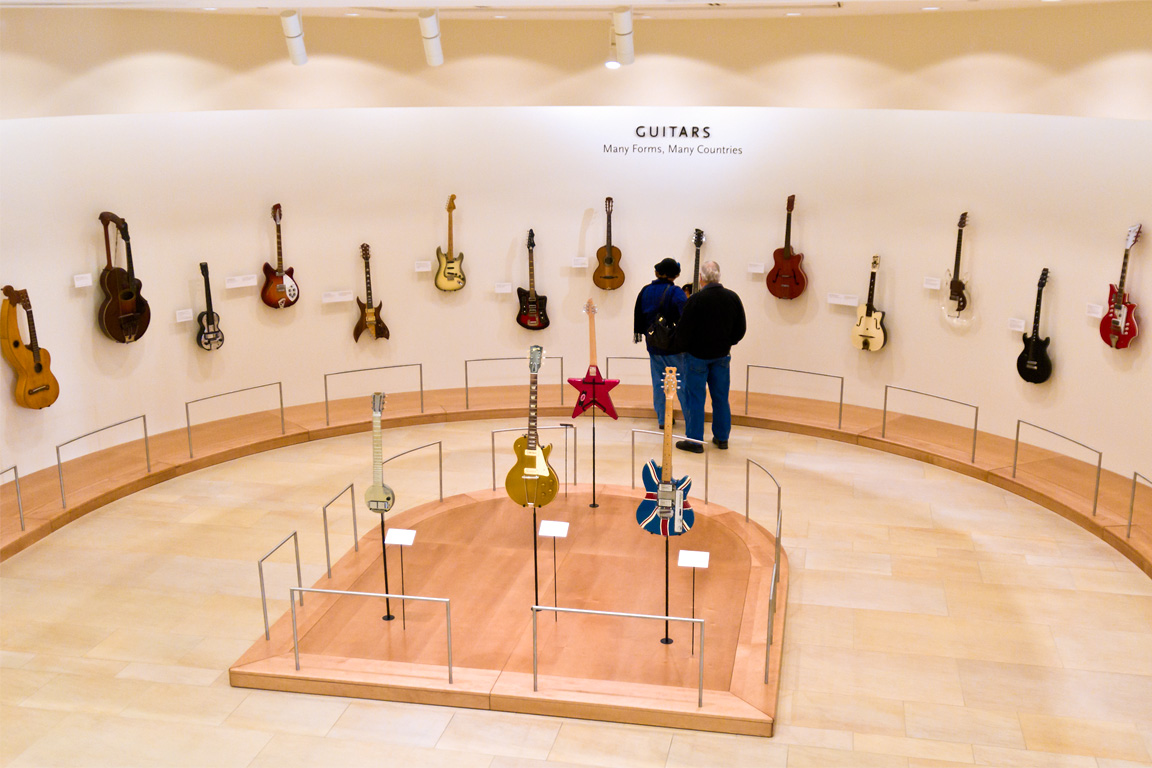
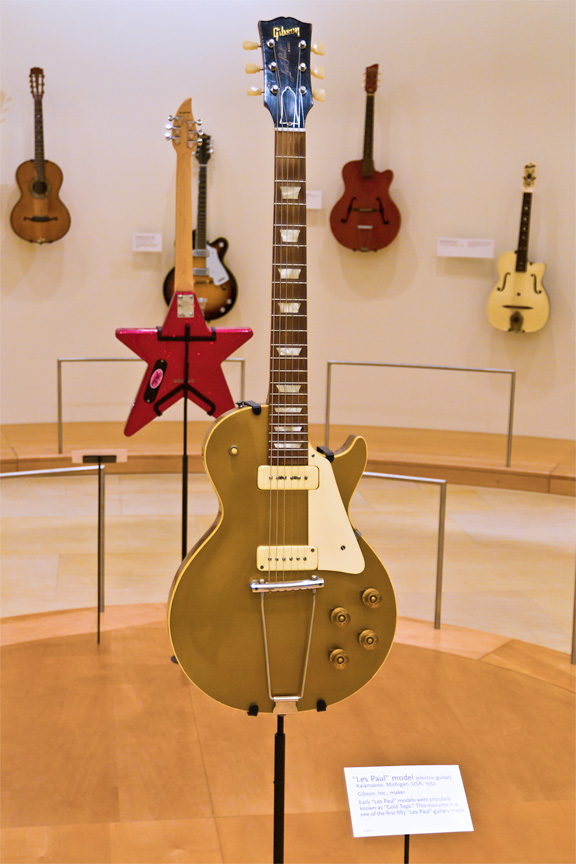 Here displayed is one of the first fifty "Les Paul" model guitars from Gibson. For the younger readers of LAHP, the late Les Paul was a pioneer in the development of the solid-body electric guitar which "made the sound of rock and roll possible". Wikipedia goes on to say, "He is credited with many recording innovations. Although he was certainly not the first to use the technique, his early experiments with overdubbing (also known as sound on sound), delay effects such as tape delay, phasing effects and multitrack recording were among the first to attract widespread attention. His innovative talents extended into his playing style, including licks, trills, chording sequences, fretting techniques and timing, which set him apart from his contemporaries and inspired many guitarists of the present day. He recorded with his wife Mary Ford in the 1950s, and they sold millions of records".
Here displayed is one of the first fifty "Les Paul" model guitars from Gibson. For the younger readers of LAHP, the late Les Paul was a pioneer in the development of the solid-body electric guitar which "made the sound of rock and roll possible". Wikipedia goes on to say, "He is credited with many recording innovations. Although he was certainly not the first to use the technique, his early experiments with overdubbing (also known as sound on sound), delay effects such as tape delay, phasing effects and multitrack recording were among the first to attract widespread attention. His innovative talents extended into his playing style, including licks, trills, chording sequences, fretting techniques and timing, which set him apart from his contemporaries and inspired many guitarists of the present day. He recorded with his wife Mary Ford in the 1950s, and they sold millions of records".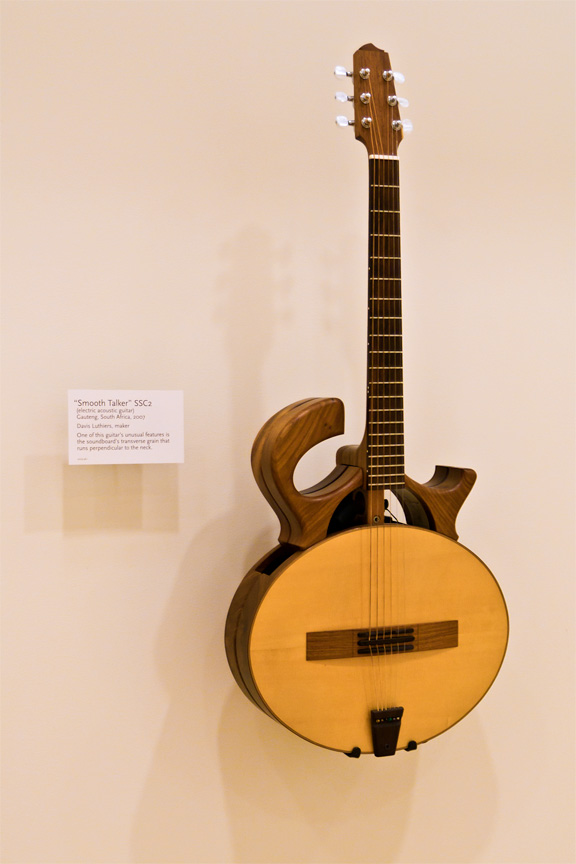 This guitar is a "Smooth Talker" SSC2, an electric acoustical guitar made by Davis Luthiers. One of the unusual aspects of this guitar is that the grain of the soundboard runs perpendicular to the neck.
This guitar is a "Smooth Talker" SSC2, an electric acoustical guitar made by Davis Luthiers. One of the unusual aspects of this guitar is that the grain of the soundboard runs perpendicular to the neck.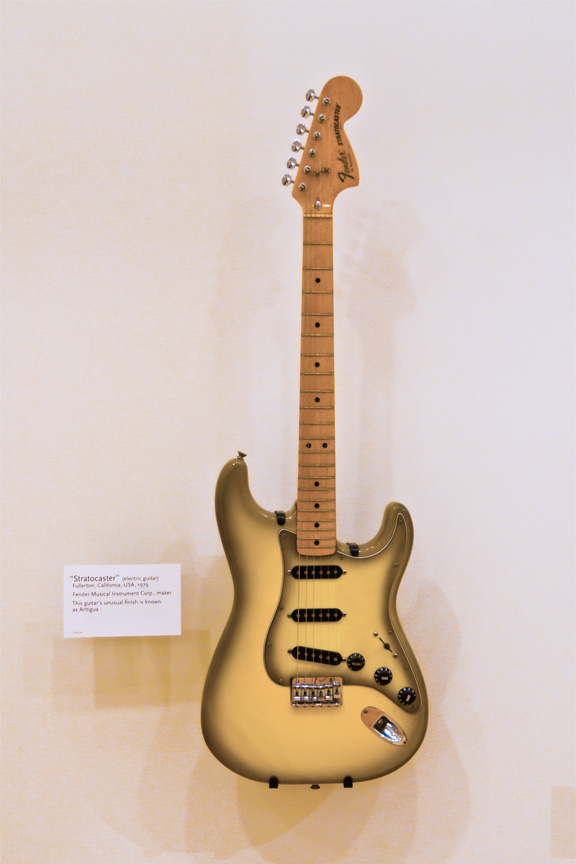 Here we encounter a Stratocaster electric guitar from Fender — nicknamed the "Strat", it has been manufactured continuously from 1954 to the present. The design of the Stratocaster has transcended the field of music to rank among the classic industrial designs of all time; examples have been exhibited at major museums around the world.
Here we encounter a Stratocaster electric guitar from Fender — nicknamed the "Strat", it has been manufactured continuously from 1954 to the present. The design of the Stratocaster has transcended the field of music to rank among the classic industrial designs of all time; examples have been exhibited at major museums around the world.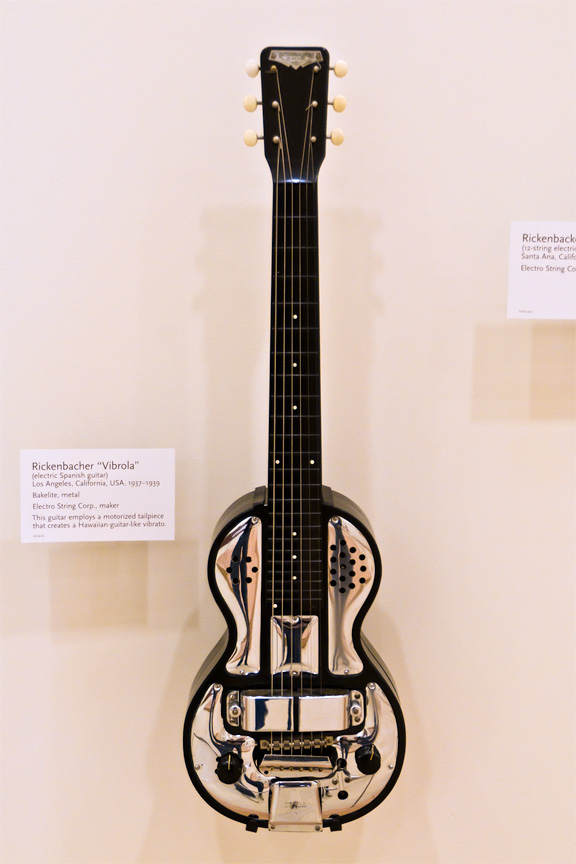 This guitar caught my eye because of its unusual design. It is a Richenbacher "Vibrola" electric spanish guitar made in the late 1930s. It employs a motorized tailpiece that creates a Hawai`ian-guitar-like sound.
This guitar caught my eye because of its unusual design. It is a Richenbacher "Vibrola" electric spanish guitar made in the late 1930s. It employs a motorized tailpiece that creates a Hawai`ian-guitar-like sound.
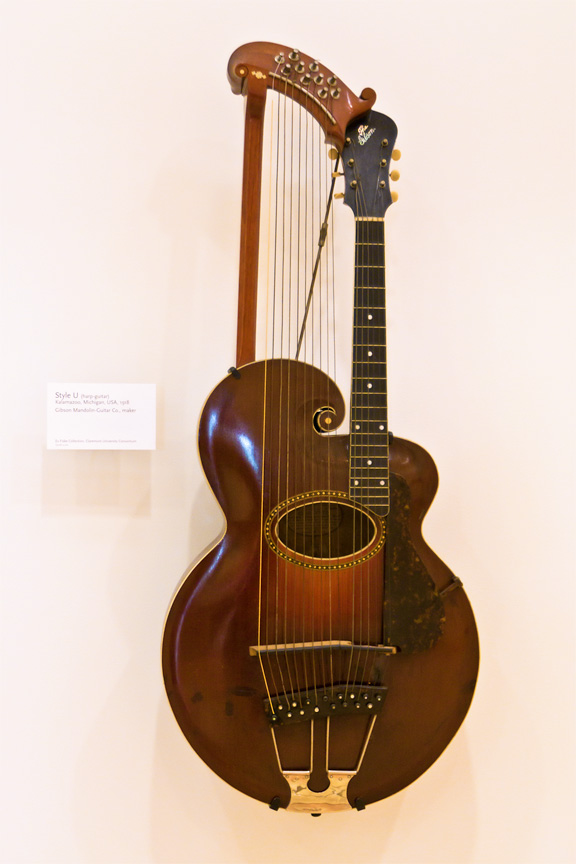 Even more unusual is the Style U Harp-Guitar made by Gibson. I found some additional images from the early 1900s of people playing this instrument — click here to view.
Even more unusual is the Style U Harp-Guitar made by Gibson. I found some additional images from the early 1900s of people playing this instrument — click here to view.
But what does it sound like? I was curious so I searched the Internet coming up with a sample — click here to listen. Cool!
To be continued.